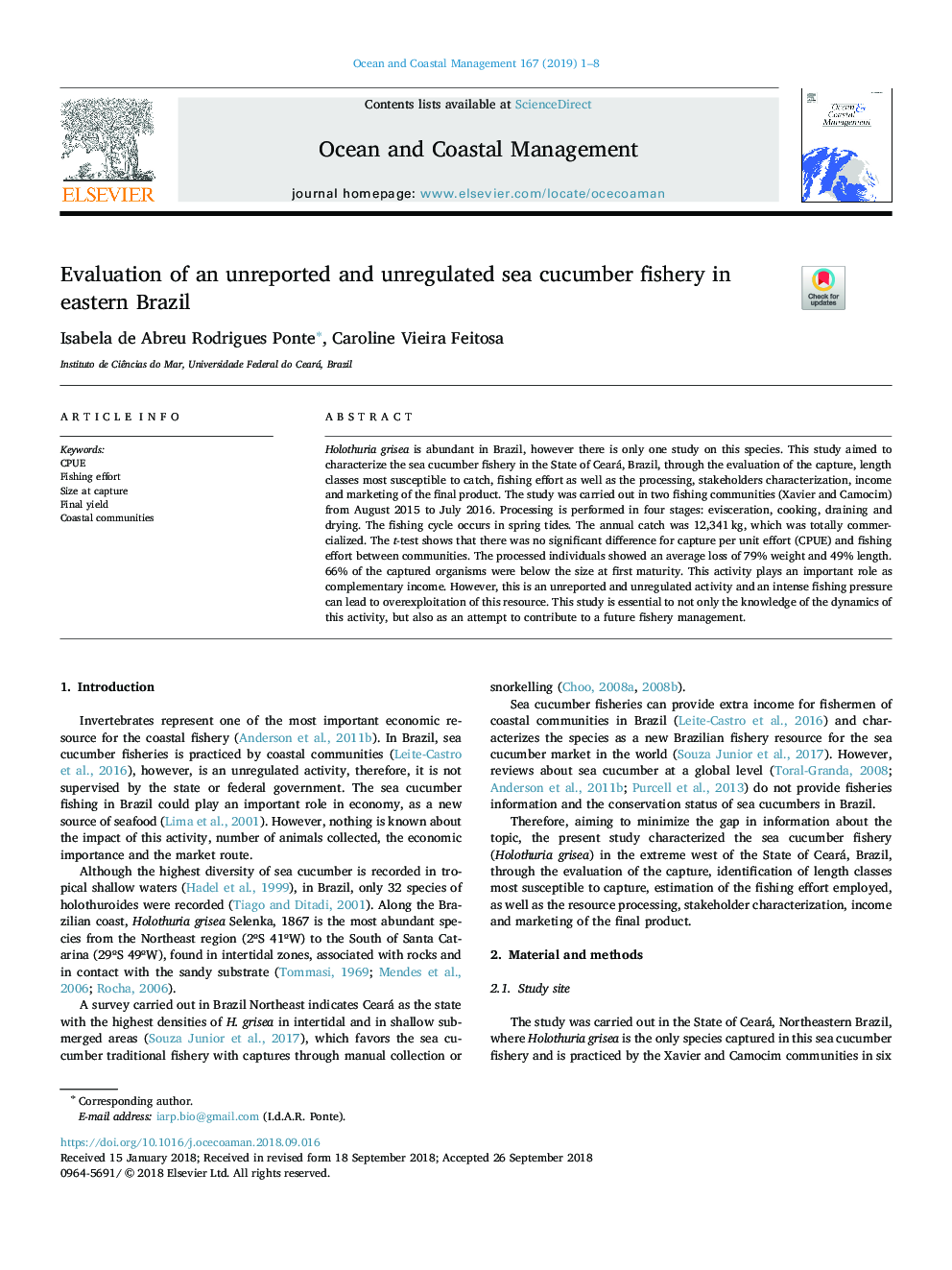| Article ID | Journal | Published Year | Pages | File Type |
|---|---|---|---|---|
| 11011078 | Ocean & Coastal Management | 2019 | 8 Pages |
Abstract
Holothuria grisea is abundant in Brazil, however there is only one study on this species. This study aimed to characterize the sea cucumber fishery in the State of Ceará, Brazil, through the evaluation of the capture, length classes most susceptible to catch, fishing effort as well as the processing, stakeholders characterization, income and marketing of the final product. The study was carried out in two fishing communities (Xavier and Camocim) from August 2015 to July 2016. Processing is performed in four stages: evisceration, cooking, draining and drying. The fishing cycle occurs in spring tides. The annual catch was 12,341â¯kg, which was totally commercialized. The t-test shows that there was no significant difference for capture per unit effort (CPUE) and fishing effort between communities. The processed individuals showed an average loss of 79% weight and 49% length. 66% of the captured organisms were below the size at first maturity. This activity plays an important role as complementary income. However, this is an unreported and unregulated activity and an intense fishing pressure can lead to overexploitation of this resource. This study is essential to not only the knowledge of the dynamics of this activity, but also as an attempt to contribute to a future fishery management.
Related Topics
Physical Sciences and Engineering
Earth and Planetary Sciences
Oceanography
Authors
Isabela de Abreu Rodrigues Ponte, Caroline Vieira Feitosa,
